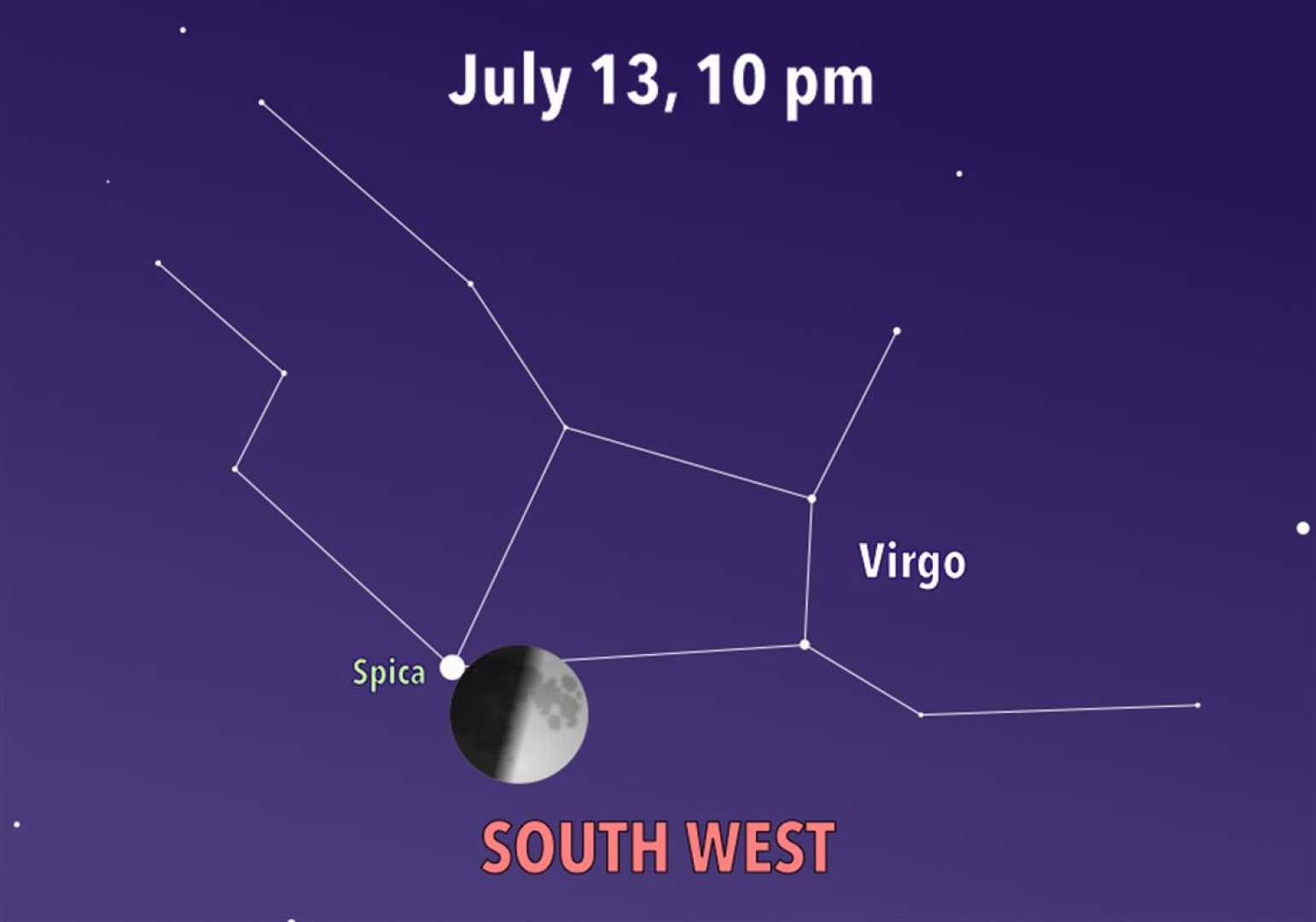News
Full Moon to Align with Bright Star Spica in April

KYIV, Ukraine — On April 12, 2025, the full moon will align with Spica, the brightest star in the constellation Virgo, creating a stunning spectacle visible from the Southern Hemisphere. Although the moon officially reaches its full phase early on April 13, it will appear nearly full to the naked eye on the evening of April 12, with over 99% of its surface illuminated.
Spica, known as the 16th brightest star in the night sky, possesses a mass 11.43 times greater than the sun and a radius nearly 7.5 times that of our star. This massive blue giant emits approximately 20,500 times more light than the sun. In contrast, the moon’s reflected light takes just 1.3 seconds to reach Earth, whereas light from Spica has been traveling through space for roughly 250 years.
Observers in the Southern Hemisphere will find this celestial display in the northeastern sky. The moon’s silvery light will contrast with Spica’s blue hue, offering a unique viewing experience for astronomers and casual stargazers alike.
This event is part of a series of astronomical occurrences throughout April, including the Pink Moon, a term referring to the full moon in April that correlates with spring’s blooming wildflowers. Despite its name, the moon will not take on a pink hue; instead, it might appear orange near the horizon due to the atmospheric scattering of light.
As April progresses, the the moon will also be involved in several interesting astronomical events including its closest approach to planets and other stars. On April 4, the half-full moon will shine near Mars and Gemini’s bright stars Pollux and Castor. The year 2025 will also see Mercury reaching its greatest angle from the sun on April 21, making it easier to observe, especially from the tropics.
With the April full moon occurring less than 23 hours before its apogee—the point in its orbit farthest from Earth—the full moon will appear noticeably smaller than the previous month’s supermoon. This alignment with Spica adds an extra layer of intrigue for astronomy enthusiasts.
For those looking to enhance their skywatching experience, astronomy experts recommend using telescopes and binoculars to view events like lunar occultations and the appearance of various planets. Observers are encouraged to prepare adequately by visiting dark locations, away from urban light pollution, for the best views of the night sky.












